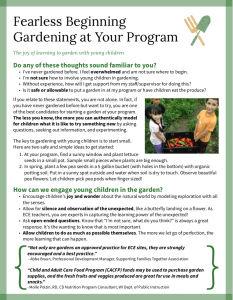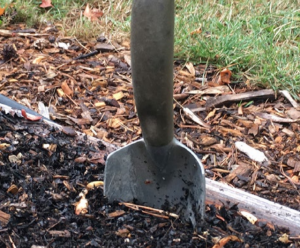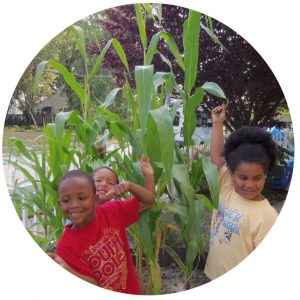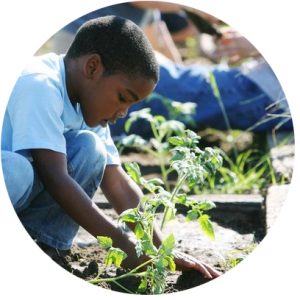 This resource is designed to remind you of your well-honed ability as an educator to learn new skills and share the experience with young children (in other words, you already have what it takes to do this!). Learn how to start small, engage children in the garden successfully, and also how to tackle any problem that may arise and turn it into a learning opportunity. This resource is funded by the W.K. Kellogg Foundation of Battle Creek, Michigan. View Resource »
This resource is designed to remind you of your well-honed ability as an educator to learn new skills and share the experience with young children (in other words, you already have what it takes to do this!). Learn how to start small, engage children in the garden successfully, and also how to tackle any problem that may arise and turn it into a learning opportunity. This resource is funded by the W.K. Kellogg Foundation of Battle Creek, Michigan. View Resource »
Reducing Lead Hazard in Gardens and Play Areas
 Lead is the most common metal contaminant in urban areas. Lead exists naturally in soils at concentrations of 10 to 50 parts per million (ppm). Higher concentrations may indicate lead contamination. This document from Oregon State University Extension will walk you through ways to limit risks of lead contamination in outdoor learning spaces. View Resource »
Lead is the most common metal contaminant in urban areas. Lead exists naturally in soils at concentrations of 10 to 50 parts per million (ppm). Higher concentrations may indicate lead contamination. This document from Oregon State University Extension will walk you through ways to limit risks of lead contamination in outdoor learning spaces. View Resource »
Teaching History in the Garden
 There are many ways to integrate history lessons into your school garden. In this article, KidsGardening.org presents some ways to use the garden as a tool to discuss a particular era in history; introduce life in a different culture; explore an event; research the historical value and travels of a particular plant; and study important people in history. View Resource »
There are many ways to integrate history lessons into your school garden. In this article, KidsGardening.org presents some ways to use the garden as a tool to discuss a particular era in history; introduce life in a different culture; explore an event; research the historical value and travels of a particular plant; and study important people in history. View Resource »
Garden to Give: Lesson Plan
 Growing your own fruits and vegetables is a great way to add fresh, local produce to your diet. Planting just a little bit more than you need also offers opportunities for you to help address hunger issues and to make a difference in your community. From KidsGardening.org. View Resource »
Growing your own fruits and vegetables is a great way to add fresh, local produce to your diet. Planting just a little bit more than you need also offers opportunities for you to help address hunger issues and to make a difference in your community. From KidsGardening.org. View Resource »
Seed Balls
 Seed balls are small bundles of seeds, clay, and soil or compost. Although seed balls have been around since ancient times, they were rediscovered in the 1930s by the Guerilla Gardening movement as a way to covertly introduce vegetation by simply tossing the seed balls (or, on a large scale, dropping them from an airplane). This activity is great for all learners and fun and inexpensive way to learn about native plants. View Resource »
Seed balls are small bundles of seeds, clay, and soil or compost. Although seed balls have been around since ancient times, they were rediscovered in the 1930s by the Guerilla Gardening movement as a way to covertly introduce vegetation by simply tossing the seed balls (or, on a large scale, dropping them from an airplane). This activity is great for all learners and fun and inexpensive way to learn about native plants. View Resource »
